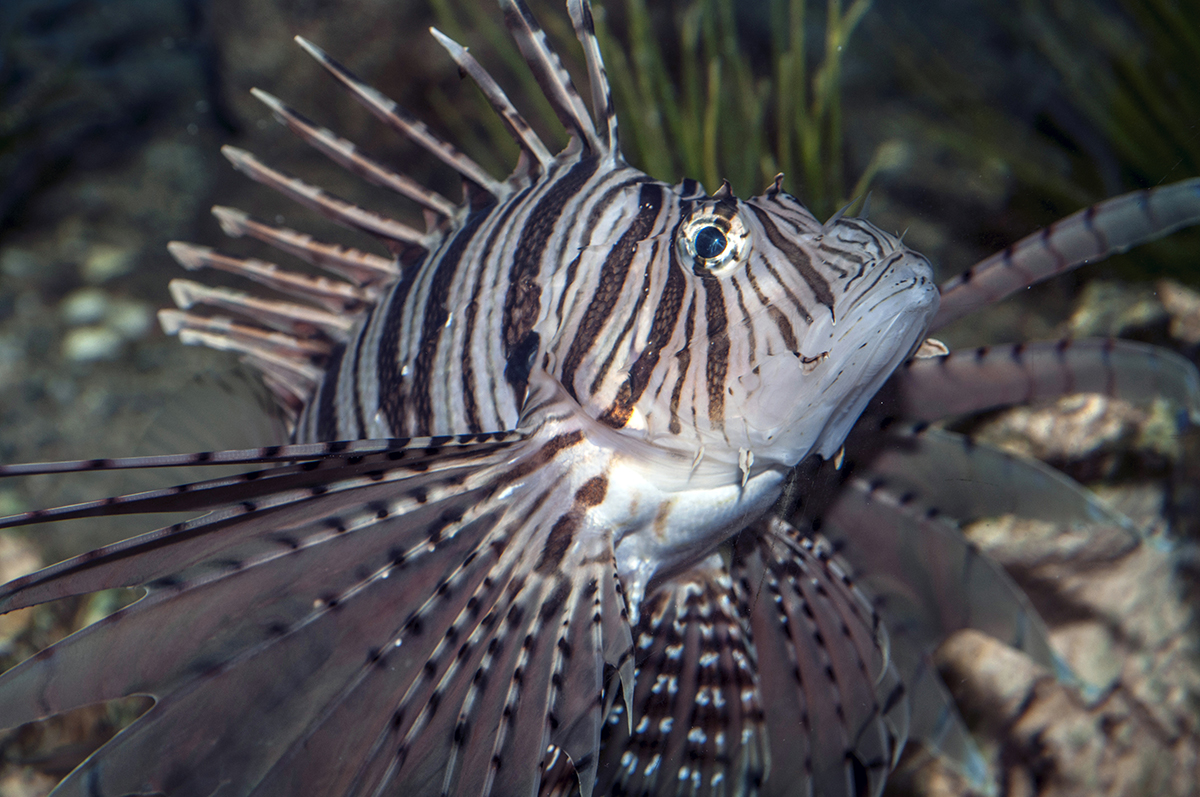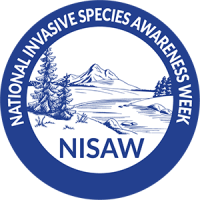
The red lionfish is a beautiful animal to display in a home aquarium, and although they are found here, they are not native to the waters off North Carolina.
Native to the Indo-Pacific Ocean, they are believed to have been introduced first off the coast of Florida in the mid-1990s and are now found throughout the entire Gulf of Mexico, Caribbean Sea and the southwestern Atlantic Ocean, with breeding populations as far north as North Carolina and juveniles showing up in the thousands every year off the coasts of New York and southern New England.
Supporter Spotlight
It’s because of invasive species like the lionfish first documented in the Tar Heel State back in 2001 that many in North Carolina observe National Invasive Species Awareness Week, Feb. 28-March 4, as declared by the nonprofit North American Invasive Species Management Association.
“One of the most critical messages of National Invasive Species Awareness Week is that awareness of what invasive species are is not enough,” said Belle Bergner, executive director of the North American Invasive Species Management Association. “Everyone has a role to play in taking action to prevent the devastating impacts of invasive species, and it’s easy. Just don’t dump unwanted aquatic or other pets or plants and clean boots, boats, or other recreational gear before entering and leaving a trail or water body.”
She described the invasive red lionfish as a perfect example of how careless dumping of unwanted aquatic pets can devastate oceanic food webs and other ecosystem dynamics and create “a management nightmare.”
Red lionfish are easy to identify. Basketball-sized, red to brown in color with reddish stripes and similarly colored feather-like fins all around its body, it is the only fish in the Atlantic with these identification traits.
Their popularity in the aquarium trade is believed to have led to their invasion of U.S. coastal waters. But there is debate as to whether the first releases were in Florida or North Carolina waters, said North Carolina Division of Marine Fisheries Invasive Species Biologist Janelle Johnson.
Supporter Spotlight
Fierce predators that consume a variety of prey items, lionfish have no known natural predators outside of their native range.
“Additionally, lionfish are able to reproduce quickly. These characteristics have allowed lionfish to become highly invasive throughout the coastal waters of the southeastern United States,” Johnson said.
North Carolina does not have a management plan in place for lionfish, nor are there mitigation strategies in place at the state level. “However, targeting of lionfish is highly encouraged. Lionfish have a flaky white meat that many find delicious. Lionfish can be targeted while spearfishing or bottom fishing on shipwrecks or reefs. Additionally, some dive operations offer trips specifically targeting invasive lionfish,” Johnson said.
In the Atlantic, red lionfish behave differently than in their native Pacific. Normally known to be shadowy and secretive, lionfish – free of their natural Pacific predators – become voracious predators in the Atlantic and are responsible for massive reef fish kills, devastating economically important fish including grouper and snapper.
“The red lionfish has a lot going for it in Atlantic waters,” said Martha Burford Reiskind, research assistant professor of applied ecology at North Carolina State University and principal investigator of a 2019 study.
“They are found at high densities and in some cases can spawn every four days in the Atlantic; their eggs can travel great distances on ocean currents, exacerbating their spread,” she said. “They are also difficult to handle because of their venomous spines. The population has grown so large that controlling it, not eradicating it, is the primary goal.”
The venom in lionfish spines can cause severe pain and, in extreme cases, respiratory issues or paralysis. They have three sets of spines near the dorsal, anal and pelvic fins. If stung, you should seek medical attention as soon as possible.
Paula Whitfield, a scientist with the National Oceanic and Atmospheric Administration’s Beaufort Lab, told Coastal Review that numerous unanswered questions remain about their diet and impact on ecosystems.
“And we do not know much about their reproduction, either,” she said. “We have no idea of the total population size of the red lionfish in the Atlantic.”
Report lionfish sightings or catches to the U.S. Geological Survey’s Nonindigenous Aquatic species reporting site, https://nas.er.usgs.gov/SightingReport.aspx, or directly to NOAA at reportlionfish@noaa.gov or 252-728-8714.
Red Lionfish Invasion Chronology
Whitfield provided the following timeline for invasive lionfish in Atlantic waters:
Mid-1990s
Red lionfish first observed and photographed off West Palm Beach Inlet in Florida. Most likely cause was the release from a private aquarium.
2000
Lionfish found in two locations off North Carolina, shipwrecks 60 miles apart. Small numbers seen over a large geographic range. First sightings recorded off South Carolina and Georgia.
2001
Lionfish documented in seven different locations off North Carolina. First juveniles observed off Long Island, New York and off Bermuda.
2004-05
First verified reports of lionfish off Bermuda.
2006
First verified report of a juvenile lionfish off southern New England at Jamestown, Rhode Island.
2022
Lionfish invasion now documented throughout the entire Gulf of Mexico south to the Yucatan Peninsula in Mexico, the entire Caribbean Sea, including Cuba, and southwestern United States breeding as far north as North Carolina in large numbers. Annual reports of large numbers of juvenile lionfish in southern New England.








